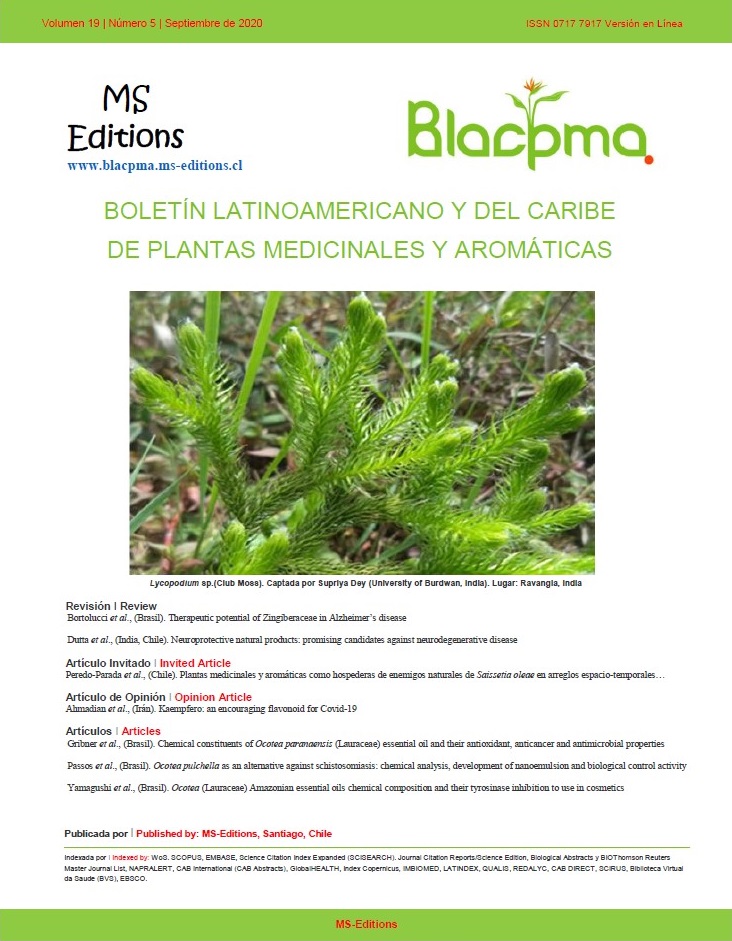Ocotea (Lauraceae) Amazonian essential oils chemical composition and their tyrosinase inhibition to use in cosmetics
DOI:
https://doi.org/10.37360/blacpma.20.19.5.36Keywords:
Amazon oil, GC-MS, Lauraceae, Tyrosinase inhibition, Caryophyllene, Ocotea genusAbstract
This study presents analyses on the chemistry, biology, pharmacology and chromatography of essential oils extracted from three species of the Ocotea genus: O. minor, O. ceanothifolia and O. leucoxylon. Leaves and stems, as well as the bark of O. minor, were processed using a modified Clevenger apparatus. Seven essential oils were obtained and analyzed using GC-FID and GC-MS, and their chemical compositions were determined. Assays of cytotoxicity, antioxidant and free radical scavenging activity, as well as tyrosinase and elastase inhibition were performed. In total, 25 constituents were identified, the principal being sesquiterpenes, such as spathulenol caryophyllene and its oxide. The oils did not present cytotoxicity using a hemolytic model, but also did not show antioxidant activity in the DPPH assay. Essential oil from stems of O. ceanothifolia, rich in spathulenol and caryophyllene oxide, demonstrated the capacity to inhibit 49.08% of tyrosinase activity at a concentration of 100 μg/mL. This research contributes to the chemical profile analysis of the three species of Ocotea through chemical investigations and biological activity, which are reported for the first time here in this study.
Downloads
Downloads
Published
How to Cite
Issue
Section
License

This work is licensed under a Creative Commons Attribution-NonCommercial-NoDerivatives 4.0 International License.

